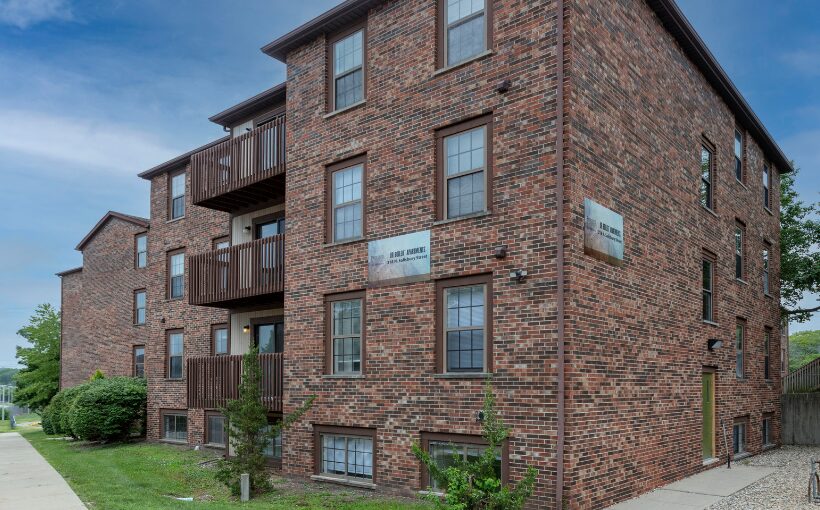Living near Purdue University offers an unparalleled experience for students seeking a blend of academic excellence, vibrant campus life, and comfortable housing options. As one of the leading institutions in the United States, Purdue University attracts students from all over the world. Whether you're a freshman or a graduate student, finding the right accommodation can significantly impact your academic journey and overall well-being. In this comprehensive guide, we will explore everything you need to know about student living near Purdue University.
From understanding the best neighborhoods to choosing the right type of accommodation, this article will provide you with valuable insights and practical tips. Whether you're looking for on-campus housing, off-campus apartments, or shared living spaces, we have you covered. Let’s dive into the world of student living near Purdue University and help you make an informed decision.
With a wide range of housing options available, it's essential to consider factors such as proximity to campus, budget, amenities, and community. This guide will not only help you find the perfect place to live but also ensure that your stay in West Lafayette is both enjoyable and productive.
Read also:Henry Ford Pain Clinic Your Premier Destination For Comprehensive Pain Management
Understanding the Purdue University Area
Best Neighborhoods for Student Living
When searching for a place to live near Purdue University, it's crucial to familiarize yourself with the surrounding neighborhoods. West Lafayette, where Purdue is located, offers several areas that cater specifically to students. These neighborhoods provide a mix of affordability, convenience, and community spirit. Here are some of the top neighborhoods for student living:
- University Square: Known for its proximity to campus, University Square is a popular choice for students who want to be close to all the action. It offers a variety of housing options, from apartment complexes to shared living spaces.
- South Street: Just a short walk from campus, South Street is another great option for students. This area is known for its vibrant nightlife, with plenty of bars and restaurants nearby.
- North End: If you're looking for a quieter neighborhood, the North End might be the perfect fit. While slightly further from campus, it offers more affordable housing options and a peaceful atmosphere.
Transportation and Accessibility
Living near Purdue University means having easy access to various transportation options. The university provides a reliable bus system that connects different parts of campus and the surrounding areas. Additionally, many students choose to bike or walk, as most neighborhoods are within a reasonable distance from campus.
For those who prefer driving, parking permits are available for students living off-campus. However, it's important to note that parking spaces can be limited in certain areas, so planning ahead is essential. Understanding the transportation options available will help you make an informed decision about where to live.
Types of Student Accommodation
On-Campus Housing
For students who want to immerse themselves fully in campus life, on-campus housing is an excellent option. Purdue University offers a variety of residence halls, each with its own unique features and amenities. Living on campus provides easy access to classes, dining facilities, and extracurricular activities.
Some popular on-campus housing options include:
- Hicks Hall: Known for its traditional dormitory style, Hicks Hall offers a community-oriented living experience.
- Earhart Hall: This all-female residence hall provides a supportive environment for women pursuing their studies.
- Cooperative Housing: For students interested in cooperative living, Purdue offers several co-op houses where residents share responsibilities and costs.
Off-Campus Apartments
Off-campus apartments offer more independence and flexibility for students who prefer a more adult living experience. Many apartments near Purdue University are designed specifically for students, providing amenities such as furnished units, on-site laundry, and fitness centers.
Read also:Top Golf Courses Near Madison Wi A Golfers Paradise
When choosing an off-campus apartment, consider factors such as:
- Proximity to campus
- Affordability
- Availability of amenities
- Community reviews
Cost of Living Near Purdue University
Budgeting for Student Living
Living near Purdue University requires careful budgeting. The cost of living can vary significantly depending on the type of accommodation you choose and the neighborhood you live in. On average, students can expect to spend between $500 to $1,200 per month on housing, utilities, and other living expenses.
Here’s a breakdown of typical costs:
- On-Campus Housing: $8,000 - $12,000 per academic year
- Off-Campus Apartments: $600 - $1,000 per month
- Utilities: $100 - $200 per month
- Groceries: $200 - $300 per month
Scholarships and Financial Aid
Purdue University offers various scholarships and financial aid options to help students cover their living expenses. It's essential to apply for these opportunities early to maximize your chances of receiving assistance. Additionally, many off-campus landlords offer student discounts or flexible payment plans to accommodate budget constraints.
Amenities and Facilities
Must-Have Features for Student Living
When searching for student accommodation near Purdue University, look for properties that offer essential amenities to enhance your living experience. Some must-have features include:
- High-speed internet access
- On-site laundry facilities
- Fitness centers
- Study rooms
- 24/7 security
These amenities can significantly improve your quality of life and help you maintain a healthy work-life balance.
Community and Social Life
Living near Purdue University provides numerous opportunities to engage with the local community and build lasting friendships. Many housing complexes organize social events, such as movie nights, game tournaments, and holiday parties, to foster a sense of community among residents.
Additionally, the university itself hosts a wide range of extracurricular activities, from sports events to cultural festivals, ensuring that there's always something happening on campus. Getting involved in these activities can help you make the most of your student living experience.
Tips for Finding the Right Place
Research and Compare Options
Before making a decision, take the time to research and compare different housing options. Visit potential properties in person, if possible, and ask plenty of questions about lease terms, maintenance policies, and community guidelines. Reading online reviews and talking to current residents can also provide valuable insights.
Consider Your Preferences
Think about your personal preferences when choosing a place to live. Do you prefer a quiet environment or a lively neighborhood? Are you looking for a single room or a shared living space? Answering these questions will help you narrow down your options and find the perfect fit.
Student Living Near Purdue University: A Data-Driven Perspective
Statistics and Trends
According to a recent survey conducted by Purdue University, approximately 70% of students choose to live off-campus during their undergraduate years. This trend is driven by the increasing demand for affordable housing options and the desire for more independence.
Data from the U.S. Census Bureau shows that the average rent in West Lafayette is slightly lower than the national average, making it an attractive destination for students looking for budget-friendly accommodation.
Conclusion: Making the Most of Your Student Living Experience
In conclusion, living near Purdue University offers a wide range of opportunities for students to thrive both academically and personally. By carefully considering factors such as location, budget, amenities, and community, you can find the perfect place to call home during your time at Purdue.
We encourage you to take action by exploring the available options, visiting potential properties, and connecting with other students to share experiences and insights. Don’t forget to bookmark this guide for future reference and consider sharing it with fellow students who may find it helpful.
Table of Contents



